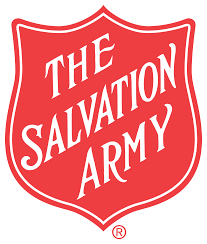






5-Star Service, Trusted & Loved by Hundreds
Your Appraiser Search Ends Here
Your Appraiser Search Ends Here
.avif)

Nationwide Coverage – Appraisals Anywhere in the US

Get it done Onsite or Online

Any Asset, Covered

Defensible for Any Purpose
An independent appraisal provides an objective, credible valuation that meets strict IRS guidelines. This detailed assessment examines the item's condition, market comparables, and intrinsic characteristics to determine its fair market value. By obtaining a professional evaluation, donors create a robust defense against potential audit scrutiny and ensure they're accurately representing their charitable contributions.
The appraisal serves multiple critical purposes. It helps taxpayers comply with IRS regulations, prevents potential penalties from misreporting, and provides transparency for both donors and receiving charitable organizations. Different types of property—whether artwork, vehicles, real estate, or other significant assets—often require specialized valuation approaches that a qualified appraiser can expertly navigate.
Beyond regulatory compliance, a well-documented appraisal supports the broader mission of charitable giving. It allows non-profit organizations to accurately record and understand the true value of in-kind donations, enhancing their financial reporting and demonstrating the tangible impact of charitable contributions.
Most importantly, a professional appraisal protects the donor's interests. It provides a credible, independent assessment that can withstand potential IRS review, giving taxpayers confidence in their charitable deduction claims. By investing in a thorough, professional valuation, donors can ensure their generosity is both recognized and properly documented.
Certified appraisers conduct an in-depth examination that considers multiple sophisticated criteria. Provenance plays a pivotal role, with the piece's historical lineage and documented ownership directly influencing its market value. Experts carefully analyze the materials, examining gemstone characteristics such as carat weight, clarity, color, and cut, while simultaneously evaluating the specific metals and unique components used in the jewelry's construction.
Craftsmanship emerges as another crucial evaluation factor. Appraisers meticulously inspect construction techniques, signature marks, and design elements to determine the piece's artistic and technical quality. Renowned manufacturer or artisan signatures can significantly elevate a piece's monetary and collectible value.
The physical condition of the jewelry undergoes rigorous scrutiny, with even minor details potentially impacting its overall worth. Pristine pieces naturally command higher valuations compared to those showing extensive wear or requiring substantial restoration. Contemporary market trends and collector interests further modulate the potential value, reflecting the dynamic nature of antique jewelry valuation.
Professional appraisals culminate in a comprehensive written report that precisely documents the findings and assigns a fair market value. This authoritative document becomes an essential tool for insurance purposes, estate valuations, potential sales, and preserving the historical narrative of exceptional jewelry pieces.
The most credible appraisals are conducted by accredited professionals who adhere to stringent industry standards and national guidelines. Their expertise ensures a nuanced, accurate assessment that provides owners with genuine insight into their jewelry's historical significance and monetary value.
Typically, the online appraisal requires submitting high-resolution photographs and comprehensive documentation about the piece. Appraisers seek critical details including:
- Precise age and historical background
- Specific materials and construction techniques
- Unique identifying markings or engravings
- Historical documentation or previous assessments
Many professional appraisers now utilize video conferencing platforms to conduct interactive assessments. These live sessions allow for real-time examination, enabling appraisers to ask detailed questions and gain nuanced insights that static images might not reveal.
The remote appraisal method offers unparalleled flexibility for individuals with limited mobility or those located in areas without immediate access to specialized antique jewelry experts. Clients can receive professional-grade assessments from the comfort of their home while maintaining the highest standards of professional evaluation.
Digital appraisals serve multiple purposes, from establishing insurance valuations to understanding the historical and monetary significance of inherited or collected pieces. The process ensures comprehensive documentation that meets industry standards, providing clients with authoritative and detailed assessments of their antique jewelry.
General jewelry appraisers provide comprehensive assessments, drawing on broad knowledge of materials, designs, and market trends. They evaluate pieces holistically, considering factors like condition, authenticity, and current market value across different periods and styles.
Gemological experts dive deep into the scientific analysis of jewelry components. Certified professionals meticulously examine gemstones, analyzing origin, cut, clarity, and weight. Their technical expertise allows for precise identification and valuation of the intricate stone elements in antique pieces.
Specialized antique appraisers offer a broader historical perspective, understanding the contextual significance beyond monetary worth. They bring deep knowledge of historical periods, design movements, and cultural influences that impact a piece's overall value and collector interest.
Certification specialists focus on creating detailed, authoritative documentation. Their work is critical for insurance purposes, legal transactions, and providing collectors with comprehensive reports that verify a piece's authenticity, characteristics, and appraised value.
Estate appraisers play a crucial role in inheritance and asset distribution. They navigate the complex landscape of generational jewelry, identifying potentially overlooked valuable pieces and ensuring fair assessment during estate settlements.
Each type of appraiser contributes unique insights, collectively forming a comprehensive ecosystem of expertise in understanding and valuing antique jewelry.
Insurance protection represents a primary motivation for obtaining an appraisal. Accurate documentation ensures that valuable pieces can be fully replaced or compensated in cases of loss, theft, or damage. Without a comprehensive professional evaluation, owners risk significant financial vulnerability.
Estate planning becomes considerably more straightforward with a precise appraisal. When distributing assets among heirs, a professional assessment eliminates ambiguity about an item's worth, facilitating fair and transparent inheritance processes. This documentation helps prevent potential family disputes and ensures clear intentions are honored.
Tax considerations also make appraisals invaluable. For significant donations or complex financial transactions, a qualified appraisal provides essential documentation that meets regulatory requirements. This becomes particularly crucial when claiming deductions or managing complex asset transfers.
Resale and market positioning benefit substantially from professional evaluations. Collectors and investors gain nuanced understanding of an item's current market value, enabling more informed decisions about potential sales, auctions, or long-term preservation strategies.
During legal proceedings such as divorces or inheritance disputes, a professional appraisal serves as an objective, authoritative reference point. The detailed documentation can provide crucial evidence, helping resolve complex asset-related conflicts with clarity and precision.
For serious collectors and cultural institutions, appraisals offer deeper insights beyond monetary value. They illuminate historical context, craftsmanship significance, and potential conservation needs, supporting more comprehensive collection management approaches.
Understanding an antique jewelry piece's true value extends far beyond simple curiosity—it represents responsible ownership, financial prudence, and historical appreciation.
Antique Jewelry appraisals are quoted on a project-by-project basis. These appraisals can be completed with in-person and online methods; in-person appraisals will sometimes include travel fees, when applicable. For some projects, when necessary, the price can be determined ahead of time, in line with the specifications of the work.
What Makes Antique Jewelry Unique?
Antique jewelry represents a fascinating intersection of art, history, and craftsmanship that distinguishes it from contemporary jewelry designs. These extraordinary pieces are more than mere accessories; they are historical artifacts that capture the essence of bygone eras.
Defining Characteristics of Antique Jewelry
- Age Classification: Typically defined as pieces over 100 years old
- Historical Significance: Reflects cultural and artistic movements of specific time periods
- Unique Craftsmanship: Handmade techniques that are rarely used in modern manufacturing
Historical Design Periods
Different historical periods showcase distinctive design characteristics:
- Victorian Era: Elaborate designs with rich symbolism and intricate details
- Art Deco Period: Geometric shapes and bold, striking color combinations
- Edwardian Period: Delicate, refined designs with extensive metalwork
Exceptional Craftsmanship Techniques
Antique jewelry stands out through specialized manufacturing methods:
- Hand-engraving with precision detailing
- Complex filigree work
- Unique bezel stone settings
- Specialized metalworking techniques
Material Significance
The materials used in antique jewelry contribute significantly to their value and uniqueness:
- Locally sourced precious metals
- Rare gemstones no longer commonly used
- High-quality materials with distinctive origins
Emotional and Cultural Value
Beyond their physical beauty, antique jewelry pieces carry profound emotional significance. They often serve as family heirlooms, preserving personal histories and connecting generations through tangible memories.
Each piece tells a story, representing not just a moment in time, but the artistic vision, cultural context, and personal experiences of its creator and previous owners.
Why Do You Need an IRS Form 8283 Appraisal?
When donating non-cash assets like antique jewelry, obtaining an IRS Form 8283 appraisal is crucial for ensuring compliance with tax regulations and maximizing potential tax deductions. This form becomes mandatory for taxpayers seeking to deduct property donations exceeding $500 in value.
Key Reasons for Obtaining an IRS Form 8283 Appraisal
1. Regulatory Compliance
- The Internal Revenue Service requires comprehensive documentation for non-cash charitable contributions
- Form 8283 must be completed accurately with precise appraised values and relevant details
- Proper documentation prevents potential complications during tax filing processes
2. Accurate Market Value Determination
- Antique jewelry valuations depend on multiple complex factors including:
- Historical age
- Current condition
- Market demand
- Historical significance
- Professional appraisers provide detailed examinations ensuring precise valuation
- Comprehensive assessments protect donors from potential undervaluation or overvaluation
3. Risk Mitigation
- Prevents potential IRS audits triggered by questionable valuations
- Reduces risk of financial penalties associated with inaccurate reporting
- Provides reliable, third-party documented evidence of jewelry's market worth
4. Supporting Charitable Initiatives
- Enables nonprofits to understand the true value of received donations
- Helps charitable organizations efficiently allocate and utilize donated assets
- Creates transparency in the donation process
Ultimately, securing a professional IRS Form 8283 appraisal represents more than a regulatory requirement—it's a strategic approach to responsible charitable giving that benefits both donors and recipient organizations.
When Is a Professional Appraisal Necessary?
Understanding when a professional appraisal becomes necessary is crucial for antique jewelry owners, especially when navigating complex financial and legal landscapes. Here are the most critical scenarios requiring expert valuation:
Key Scenarios Requiring Professional Appraisal
Tax Deductions for Charitable Donations
- IRS requires a qualified appraisal for non-cash charitable contributions exceeding $5,000
- Appraisal must be professionally documented and attached to Form 8283
- Validates the claimed deduction value with detailed documentation
Estate Planning Considerations
- Provides accurate valuation for equitable asset distribution
- Minimizes potential inheritance disputes among heirs
- Ensures comprehensive documentation of valuable jewelry assets
Insurance Protection
- Establishes precise current market value for comprehensive coverage
- Protects against potential underinsurance or claim complications
- Creates official record of jewelry's worth for insurance purposes
Sale and Liquidation Strategies
- Determines accurate market value for private sales or auctions
- Helps owners make informed selling decisions
- Prevents undervaluing or overpricing valuable pieces
Legal Documentation
- Provides objective valuation for legal proceedings
- Essential in divorce settlements or asset division
- Creates authoritative documentation for potential disputes
Professional appraisals serve as critical documentation, offering clarity and protection across financial, legal, and personal asset management scenarios.
Key Factors Determining Antique Jewelry Value
Understanding Antique Jewelry Valuation
Appraising antique jewelry requires a comprehensive understanding of multiple complex factors. These key elements determine not just monetary value, but also historical significance and collector interest.
1. Age and Rarity: Historical Context Matters
- Historical periods significantly impact jewelry value
- Examples of high-value eras include:
- Victorian Period (1837-1901)
- Art Deco Era (1920-1940)
- Art Nouveau Period (1890-1910)
- Limited production runs increase potential value
- Unique design elements enhance collector desirability
2. Materials and Craftsmanship: Quality is Key
- Premium materials drive valuation:
- Precious metals: Gold, platinum, silver
- High-quality gemstones
- Gemstone evaluation factors:
- Color intensity
- Clarity
- Precise cut
- Intricate manufacturing techniques increase worth
- Artisan signature or brand reputation matters
3. Condition: Preservation is Paramount
- Minimal wear significantly enhances value
- Negative condition factors include:
- Extensive repairs
- Structural alterations
- Visible damage
- Original components preserve authenticity
- Professional restoration can mitigate minor damage
4. Provenance: The Story Behind the Piece
- Ownership history adds intrinsic value
- Documentation proving historical significance
- Connection to notable figures or events increases interest
- Verifiable historical documentation is crucial
5. Market Dynamics: Understanding Current Trends
- Collector interest fluctuates over time
- Global economic conditions impact valuations
- Emerging markets can shift demand
- Current fashion and design trends influence collector preferences
A comprehensive understanding of these factors provides a nuanced approach to antique jewelry valuation, ensuring accurate assessment for collectors, sellers, and tax reporting purposes.
Navigating the Jewelry Appraisal Process
Understanding the Jewelry Appraisal Journey
Navigating the jewelry appraisal process for IRS Form 8283 requires careful attention to detail and a strategic approach. Here's a comprehensive guide to help you successfully complete your appraisal:
Key Appraisal Requirements
- Appraisals for donated property over $5,000 must be conducted by a qualified appraiser
- The appraiser must have significant expertise in valuing antique jewelry
- Professional credentials and adherence to industry standards are essential
Selecting the Right Appraiser
Choosing a reputable appraiser is critical to the process. Consider the following:
- Seek certification from recognized professional organizations
- Look for memberships in:
- American Society of Appraisers
- International Society of Appraisers
- Verify the appraiser's ethical standards and professional background
Preparing for the Appraisal
Before your appraisal appointment, compile essential documentation:
- Gather original purchase receipts
- Collect previous appraisal documents
- Compile certificates of authenticity
- Organize any historical provenance information
What to Expect During the Appraisal
A comprehensive jewelry appraisal involves a detailed examination considering:
- Material quality
- Craftsmanship
- Historical significance
- Current market trends
Post-Appraisal Considerations
After receiving your appraisal report:
- Carefully review the detailed written report
- Verify inclusion of clear photographs
- Ensure comprehensive item description
- Store the document securely for tax purposes
- Consider periodic reappraisals to track market value changes
Note: Accurate documentation is crucial for IRS compliance and avoiding potential penalties.
How to Select a Qualified Appraiser
Selecting a Qualified Appraiser for Antique Jewelry Valuation
Choosing the right appraiser for your antique jewelry is a critical step in ensuring an accurate and compliant valuation for IRS Form 8283. Here are the essential factors to consider:
Key Qualification Criteria
- Professional Credentials
Prioritize appraisers with specialized certifications from reputable organizations such as:
- American Society of Appraisers (ASA)
- International Society of Appraisers (ISA)
- Professional jewelry appraisal certifications
- Specialized Expertise
Seek professionals who demonstrate:
- In-depth knowledge of antique jewelry historical periods
- Understanding of vintage materials and craftsmanship
- Expertise in identifying unique design characteristics
- Comprehensive Valuation Methodology
A qualified appraiser should employ a rigorous approach that includes:
- Detailed market research
- Analysis of piece provenance
- Condition assessment
- Comparative market analysis
- Professional Reputation
Evaluate the appraiser through:
- Client testimonials
- Industry references
- Professional network recommendations
- Track record of accurate valuations
Verification Steps
- Request and verify professional credentials
- Review sample appraisal reports
- Confirm professional organization memberships
- Check for recent continuing education certifications
By carefully vetting potential appraisers using these comprehensive criteria, you can secure a professional who will provide an accurate, credible valuation for your antique jewelry documentation.
Types of Collectible Jewelry
Collectible jewelry encompasses a diverse array of styles, materials, and historical significance, creating a fascinating landscape for enthusiasts and investors. Understanding the nuanced categories is particularly critical when preparing for precise appraisals related to tax documentation.
Antique Jewelry
Antique jewelry represents pieces that have endured for at least a century, typically including:
- Victorian era designs
- Edwardian period craftsmanship
- Art Nouveau aesthetic elements
These pieces are distinguished by their:
- Intricate hand-crafted details
- Unique historical design elements
- Materials reflective of their specific time period
Vintage Jewelry
Spanning from the 1920s to the 1980s, vintage jewelry captures the distinctive design evolution across decades, featuring:
- Art Deco geometric patterns
- Retro bold statement pieces
- Mid-Century Modern minimalist designs
Fine Jewelry
Characterized by exceptional quality materials and precious gemstones, fine jewelry includes:
- Metals: Gold, platinum, sterling silver
- Gemstones: Diamonds, sapphires, emeralds
- Precision in stone cut and metal quality
Costume Jewelry
Created from non-precious materials, costume jewelry offers unique collecting opportunities, particularly pieces from:
- Iconic designers like Coco Chanel
- Vintage fashion houses
- Limited edition collections
Contemporary Designer Jewelry
Representing current artistic expressions, contemporary jewelry is valued for:
- Innovative design techniques
- Artistic originality
- Reflection of current cultural trends
Each jewelry category carries unique characteristics that significantly impact valuation. Comprehensive understanding ensures accurate documentation and compliance with tax regulations surrounding collectible assets.
Documentation for Tax Reporting
When preparing for tax reporting, especially for charitable contributions or estate planning, accurate and detailed documentation of your antique jewelry's value is crucial. This is particularly important when filing IRS Form 8283, which is required for non-cash charitable contributions exceeding $500.
Why Documentation Matters
- Ensures compliance with tax regulations
- Establishes the legitimacy of the appraised value
- Provides protection in the event of an audit
Essential Components of Professional Appraisal Documentation
Comprehensive Item Description
A professional appraisal should provide a thorough description that includes:
- Precise materials used
- Exact measurements
- Significant details affecting value
- Gemstone specifications
- Historical significance
- Craftsmanship details
Visual Evidence
High-quality photographic documentation is critical, featuring:
- Multiple angles of the jewelry
- Close-up images of distinguishing markings
- Detailed feature documentation
- Visual identification support
Market Valuation Analysis
A comprehensive appraisal should include:
- Comparative market research
- Recent auction result comparisons
- Current retail market listings
- Contextual value determination
Appraiser Credentials
Professional credibility is established through:
- Detailed professional qualifications
- Certifications from recognized organizations
- Demonstrated expertise in antique jewelry
- Transparent professional background
Documentation Best Practices
To ensure comprehensive protection and easy future reference, maintain both digital and physical copies of the appraisal document. This approach safeguards against potential loss and simplifies future tax reporting processes.
Meticulously prepared documentation provides peace of mind, ensuring your antique jewelry is accurately valued and meets all IRS requirements for tax reporting purposes.
Preparing Your Jewelry for a Professional Assessment
Essential Steps for Preparing Your Antique Jewelry for Professional Assessment
Preparing your antique jewelry for a professional appraisal requires careful attention to detail and strategic planning. The right approach can significantly enhance the evaluation process and ensure a comprehensive assessment that meets IRS requirements for Form 8283.
Compile Comprehensive Documentation
- Gather all original purchase receipts
- Collect previous appraisal documents
- Assemble certificates of authenticity
- Organize any existing gemological reports
These documents provide critical context and support the appraiser's detailed valuation process.
Gentle Cleaning Techniques
Carefully prepare your jewelry for assessment with these cleaning recommendations:
- Use a soft, lint-free cloth to remove surface dust
- Avoid harsh cleaning chemicals
- Do not use ultrasonic cleaners
- Focus on gentle surface cleaning that preserves the item's integrity
Prepare Historical Context
Compile important background information about your piece, including:
- Original purchase location and date
- Known previous ownership history
- Family provenance or significance
- Any unique historical connections
Select a Qualified Appraiser
When choosing a professional for your antique jewelry assessment, prioritize the following:
- Specialized experience in antique jewelry
- Knowledge of historical styles and materials
- Understanding of current market trends
- Expertise in documentation for IRS purposes
By thoroughly preparing your antique jewelry and selecting a knowledgeable appraiser, you'll ensure a comprehensive and accurate valuation that captures both the monetary and historical significance of your treasured piece.
Your Appraisal Questions Answered
Antique Jewelry Appraisal FAQs for IRS Form 8283
Navigating the world of antique jewelry appraisals for tax purposes can be complex. This guide addresses the most critical questions surrounding the appraisal process and IRS requirements.
What is an Antique Jewelry Appraisal?
An antique jewelry appraisal is a professional evaluation that comprehensively determines a piece's value through careful examination of:
- Age and historical significance
- Overall condition
- Craftsmanship quality
- Current market demand
- Intrinsic material value
Why Appraise for IRS Form 8283?
IRS Form 8283 requires detailed documentation for non-cash charitable contributions exceeding $500. A professional appraisal serves critical purposes:
- Provides legally substantiated valuation
- Ensures tax compliance
- Protects against potential audit penalties
- Creates official documentation of donated asset value
How Do Professionals Determine Value?
Expert appraisers use a comprehensive approach to valuation, including:
- Comparative market analysis
- Current market trend evaluation
- Detailed material and craftsmanship assessment
- Examination of unique historical characteristics
- Analysis of gemstone and metal quality
What to Expect During the Appraisal Process
A professional appraisal typically involves these key steps:
- Initial visual and tactile examination
- Detailed documentation of item characteristics
- Professional photography
- Comprehensive written report preparation
- Verification of item provenance
IRS Form 8283 Appraisal Requirements
The IRS mandates specific documentation for charitable contribution appraisals:
- Appraiser's professional qualifications
- Detailed item description
- Clear methodology for value determination
- Current market value assessment
- Signed certification of valuation
Understanding these key aspects of antique jewelry appraisals helps ensure a smooth, compliant process for documenting charitable contributions.
The Strategic Value of Professional Appraisal
When it comes to valuing antique jewelry, a professional appraisal is a critical step, especially for IRS Form 8283 purposes. This form is mandatory when donating property valued over $5,000 and requires a qualified appraisal to substantiate the property's fair market value.
Key Benefits of Professional Jewelry Appraisals
- Expert Market Valuation: Professional appraisers bring specialized knowledge about:
- Jewelry market trends
- Historical significance
- Material composition
- Current market demand
- Comprehensive Documentation: A certified appraisal provides:
- Detailed item description
- Condition assessment
- Provenance verification
- Comparative market analysis
- IRS Compliance Protection: Ensures:
- Adherence to IRS appraisal guidelines
- Reduced risk of potential audits
- Maximized tax contribution benefits
Why Professional Certification Matters
The IRS requires appraisers to meet specific qualifications, including specialized certifications and demonstrated field experience. These stringent requirements ensure the credibility and accuracy of the valuation process.
Strategic Implications
A professional appraisal transcends mere documentation. It represents a strategic approach to:
- Protecting donor interests
- Supporting charitable contributions
- Providing clarity for estate planning
- Creating a reliable financial record
Ultimately, a professional jewelry appraisal is an investment in accuracy, compliance, and financial transparency.
Next Steps for Jewelry Owners
As an antique jewelry owner, understanding the next steps for appraising your items can be crucial, particularly if you intend to use IRS Form 8283 for charitable contributions or estate planning. Here's a comprehensive guide to help you navigate the appraisal process effectively.
Essential Steps for Antique Jewelry Appraisal
1. Comprehensive Documentation Gathering
- Collect all relevant historical documentation
- Gather purchase receipts and previous appraisals
- Compile certificates of authenticity
- Assemble detailed information about the item's provenance
Thorough documentation significantly enhances the accuracy and credibility of your appraisal.
2. Selecting a Qualified Appraiser
- Seek professionals with specialized antique jewelry expertise
- Verify certifications from reputable appraisal organizations
- Look for experts with proven knowledge of current market trends
- Check professional credentials and specialization
The right appraiser can make a substantial difference in accurately valuing your antique jewelry.
3. Appraisal Preparation and Scheduling
- Contact potential appraisers to discuss your specific item
- Schedule a comprehensive examination
- Prepare to provide detailed information about the jewelry's history
- Be ready to discuss any repairs or modifications
Your active participation ensures a more accurate and thorough appraisal process.
4. Understanding the Appraisal Report
- Carefully review the detailed valuation document
- Examine the rationale behind the assigned value
- Verify the item's attribution and description
- Keep the report accessible for IRS Form 8283 submission
The appraisal report is a critical document for financial and legal purposes.
5. Strategic Planning for Your Appraisal
- Determine the primary purpose of the appraisal
- Consider potential uses: charitable donation, estate planning, insurance
- Understand the financial and legal implications
- Consult with financial or legal advisors if necessary
Thoughtful planning ensures you maximize the value and utility of your antique jewelry appraisal.
By following these steps, you'll be well-prepared to navigate the complex process of antique jewelry appraisal with confidence and expertise.
BEST-IN-CLASS APPRAISERS, CREDENTIALED BY:















